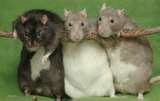Single shoes appear on sidewalks, streets, in gutters and bushes. Why have they lost their other half? How does one lose and leave a shoe? Do they search for the lost one?
Is the single shoe in remorse
waiting for his friend to return? Who left them lonely on the byways?
I have pondered these questions for years. When I became part of the single shoe saga, the situation of sole in solitude revealed itself.
While stretching a leg on a high railing near a pond by the Willamette river, gravity
grabbed my right flip flop. I watched the
shoe disappear into the brush which prompted my immediate action. I searched and located a branch. Up my shoe came until another branch knocked it away. Really?
Approaching me from the side and not containing his laughter, my husband advised we needed to go home and get, "the right tool for the right project.”
I agreed but worried about the single shoes I'd seen in the past. Would a pond monster eat my shoe before our return? Maybe a turtle would use it to skim the lily pads?
Into the garage we went where Michael rigged a wire device any fly fisherman would love. After our return to the pond, he gave a warning to hook the end on my finger so I wouldn't lose it. I wound it around my hand.
When I dangled it down toward my shoe, the wire did not feel stiff enough. I hooked the thong and began to reel it in. Oh so close until branches grabbed it. Now my shoe and the device nestled under poison oak.
"Right tool . . . ha."
"Grrrr!" By now I was driven. Searching for a heftier branch, my shouts turned the heads of passersby, “I can do this.” I angled the branch and the thong hooked securely. Again the struggled an Up
for me and a Devilish down for gravity. This seesaw continued until gravity won and the shoe vanished
far into the under brush.
My "I cans" shifted into four-letter cries of frustration!
Suddenly, out of the mist, came a fellow dressed in Levis who
looked like Johnny Depp. He slipped over the railing and presented me with my shoe along with the
wire device.
"Is this all you need?" His face beamed China blue eyes up at me. I thanked him and asked what I could do for him? He just smiled and shook
his head as he leaped onto the path and back into the mist.
Michael came around the corner after photographing a
blue heron. He was shaking his head,
"You told me not to go into the poison oak because I had shorts on. That fellow wore long pants."
And thereby hangs a tale - a saga of the
single shoe reunited with its sole mate.















































